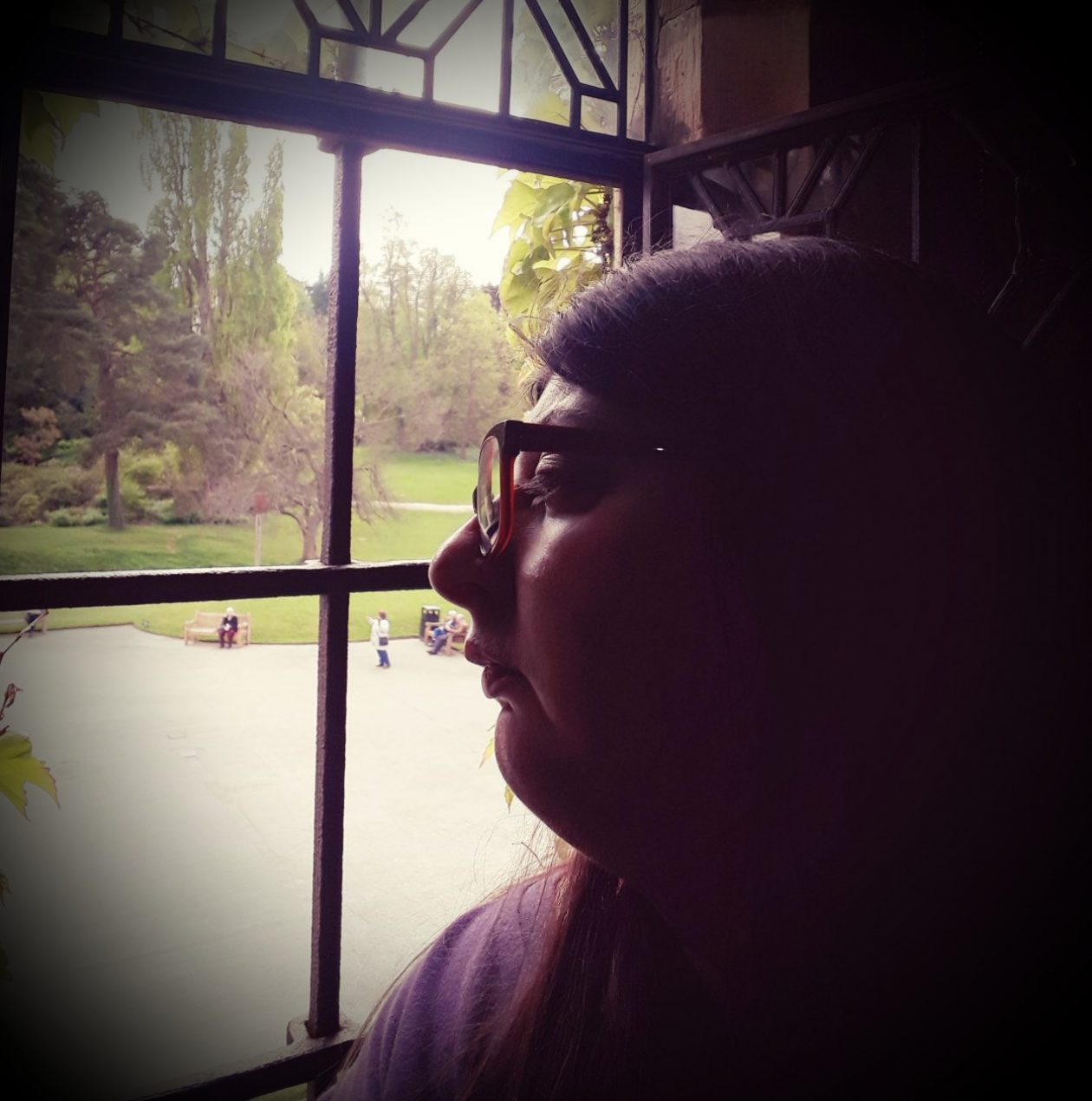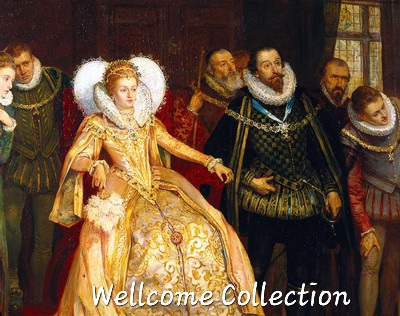
Glindoni, Henry Gillard, 1852-1913. Date: 1800-1899
http://creativecommons.org/licenses/by/4.0/
John Dee was a fascinating character, in perhaps more ways than one, however, let us start at the beginning. Born in the Tower Ward of the City of London to Joanna and Rowland Dee and because of the Welsh decent from his father’s side, it was presumed that the surname of Dee came from the Welsh Du, meaning black.
His family had arrived in London with Henry Tudor’s coronation as Henry became King Henry VII and his father, Rowland would become a courtier in Henry VIII’s court, being a mercer within the city.
Rowland was able to send his son to school and John Dee attended Chelmsford Chantry School in the Chelmsford area of London from 1535 to 1542. This school is now called King Edward VI Grammar School after King Henry VIII’s son, Edward.
From there, he entered into St John’s College, at Cambridge, aged just fifteen, graduating with a BA in 1545 or the early of 1546. With his talent being recognised, he became a fellow of Trinity College, at Cambridge on its foundation by Henry VIII in 1546. This was where he was able to put his talents as a magician to good use with the effects used in the production of Aristophanes’ Peace.
In the late 1540s and early 1550s, he travelled all over Europe, studying and learning his craft as a magician as well as a mathematician. When he returned to England, he returned with a major collection of mathematical and astronomical instruments.
Dee became a Rector at Upton-upon-Severn from 1553, at which point Dee was offered a readership in mathematics at Oxford University in 1554, which he declined. The reason for his decline was that he thought it was offensive that English universities chose to focus on Rhetoric and grammar rather than philosophy and science.
Following in his father’s footsteps, in 1555, Dee joined the Worshipful Company of Mercers. However, it was in that same year Dee was arrested and charged with the crime of “calculating”. This was because he had cast horoscopes of Queen Mary and Princess Elizabeth. These charges were then changed to treason against the Queen. Dee appeared in the Star Chamber and actually managed to exonerated himself.
Still on a mission to be accepted in court, Dee presented Queen Mary in 1556 with a visionary plan for preserving old books, manuscripts and records and founding a national library, but it was not taken up. He instead, he expanded his personal library in Mortlake, acquiring books and manuscripts in England and on the Continent. Dee’s library, became a centre of learning outside the universities and attracted many scholars. Dee, in turn, tutored and patronised many a well-known Tudor, such as Sir Philip Sidney; Robert Dudley, 1st Earl of Leicester; Edward Dyer and Sir Christopher Hatton.
However, when Elizabeth succeeded to the throne in 1558, events changed for Dee as he became her astrological and scientific advisor.
He, amazingly was allowed to chose her coronation date and through this closeness with the queen, Dee even became a Protestant, himself.
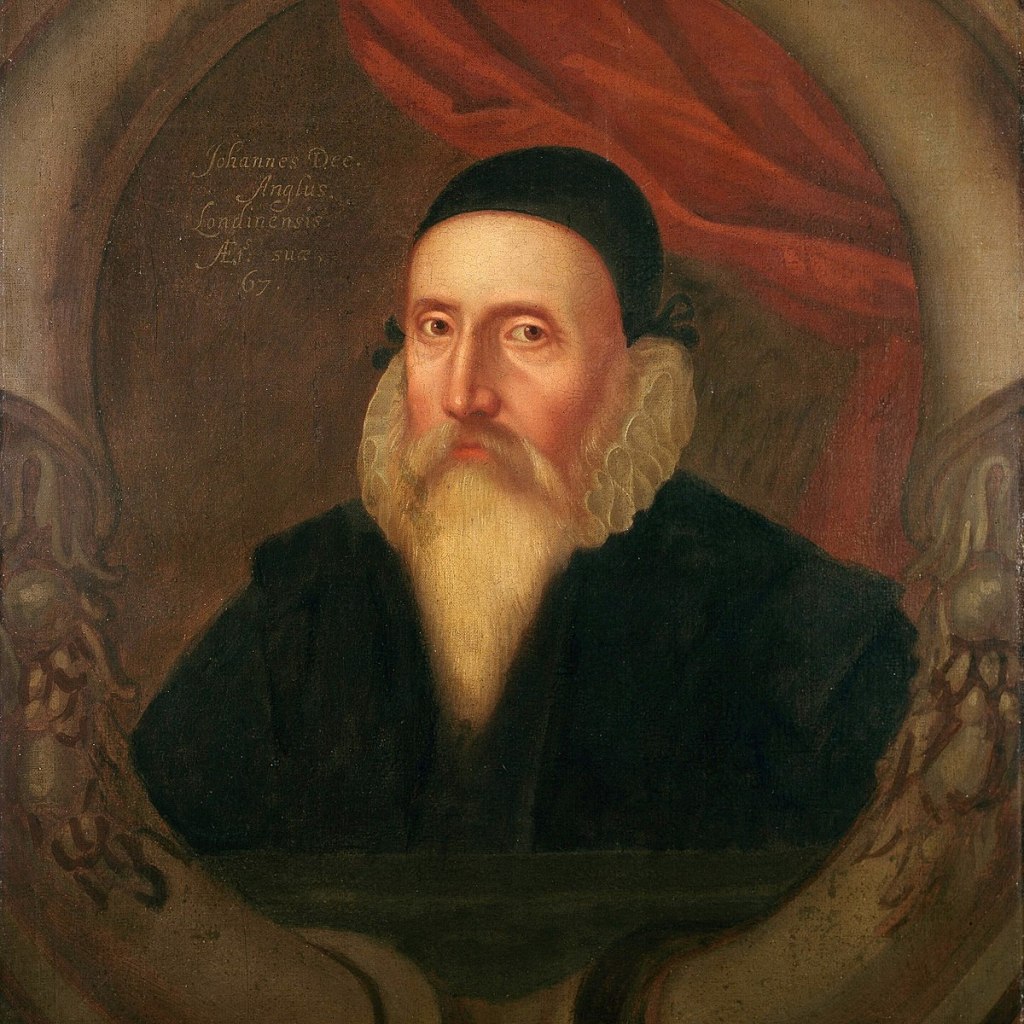
From the 1550s to at least the 1570s, he worked as an advisor to England’s voyages of discovery, in this role he provided technical aid with navigation and even political support to create a “British Empire”, a term he was purportedly the first to use.
In his later years, he decided to travel once more, mainly to Poland but with a visit to Bohemia. However, although Dee was generally accepted as a man of great knowledge, he also found that he was very mistrusted, due to his close relationship with Queen Elizabeth I.
The misfortunes of John Dee did not end there, as when he returned to England, Dee found that his famous library had been vandalised along with the rest of his home and many items were stolen.
When Queen Elizabeth I passed away and the new monarch, James VI of Scotland and I of England, wanted nothing to do with Dee, he was to spend the rest of his life in poverty, even having to sell off other items to support himself.
He was to pass away at his home in the later stages of 1608 or early stages of 1609, aged around eighty one. The gravestone, together with the parish records are, to date, missing. However, in 2013 a memorial plaque dedicated to him, was placed inside the church, closest to his home at Mortlake.
The Secret of John Dee
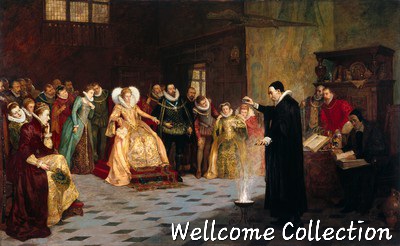
Glindoni, Henry Gillard, 1852-1913. Date: 1800-1899
http://creativecommons.org/licenses/by/4.0/
John Dee’s reputation with black magic has survived through the Victorian period into modern day, with him being referenced in a computer game called, Uncharted 3. However, if we were to step back for a moment into the Victorian period, we might discover a painting by Henry Gillard Glindoni, called ‘John Dee performing an experiment before Queen Elizabeth I’. In this painting, it is very much as the title suggests, a room full of courtiers and almost central is Queen Elizabeth I, watching John Dee, dressed in black, doing an experiment. Nothing perhaps strange or secretive there, one may think, however, a discovery was made in research for ‘Scholar, Courtier, Magician: The Lost Library of John Dee’, that opened at the Royal College of Physicians (RCP) in London in 2006.
The X-ray of the painting found alterations to the Glindoni painting, including the addition of Dee’s assistant medium Edward Kelley, wearing a cap that hid his cropped ears (likely a punishment for a crime like forgery, according to RCP), as well as jars and other spherical objects in front of the table near Dee.

Glindoni, Henry Gillard, 1852-1913. Date: 1800-1899
http://creativecommons.org/licenses/by/4.0/
But, perhaps the most shocking thing the X-ray discovered was the presence of a ring of human skulls had circled John Dee in a painting by the English artist Henry Gillard Glindoni. This suggests a patron likely asked Glindoni to hide in his late-19th-century re-creation of Dee’s performance for Queen Elizabeth I.
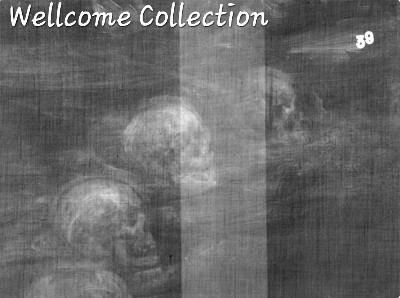
Glindoni, Henry Gillard, 1852-1913. Date: 1800-1899
http://creativecommons.org/licenses/by/4.0/
Sources
Roberts, R. Julian: “Dee, John (1527–1609)”. Oxford Dictionary of National Biography (online ed.). Oxford University Press.
Jones, John James; Chambers, Llewelyn Gwyn: “Dee, John (1527–1608), mathematician and astronomer”. Dictionary of Welsh Biography. National Library of Wales.
Fell Smith, Charlotte (1909). The Life of Dr. John Dee (1527–1608). London: Constable & Co.
Roberts, R. Julian: “A John Dee Chronology, 1509–1609”. Renaissance Man: The Reconstructed Libraries of European Scholars: 1450–1700 Series One: The Books and Manuscripts of John Dee, 1527–1608. Adam Matthew Publications.
“Books owned by John Dee”: St. John’s College, Cambridge. 25 September 2006.
MacMillan, Ken: “Discourse on History, Geography, and Law: John Dee and the Limits of the British Empire, 1576-80”. Canadian Journal of History.
Mackay, Charles: “The Alchymists”. Memoirs of Extraordinary Popular Delusions and the Madness of Crowds. Office of National illustrated library.
Wellcome Collection archives.
About the Author
Being a Fellow of the Royal Historical Society and having studied history at university, Amanda has written academic papers for universities and special events including the Hampton Court Palace’s Field of the Cloth of Gold event, the Anne Boleyn Files and Dan Snow’s History Hit.
Freelancing, Amanda has been a historical researcher for museums, books and television programmes on a range of subjects of different time periods. She has appeared on Sky History’s, History’s Greatest Myths television programme.
She is the author of The Boleyns: From the Tudors to the Windsors, published by Amberley Publishing.

